What Is Donburi: Types and Restaurants in Japan

Donburi refers to rice bowl dishes with toppings such as tempura, pork cutlet, beef, seafood, chicken and egg, and others. We introduce the features of these hearty Japanese dishes and restaurants where you can try them.
Donburi: A Bowl of Rice with Toppings
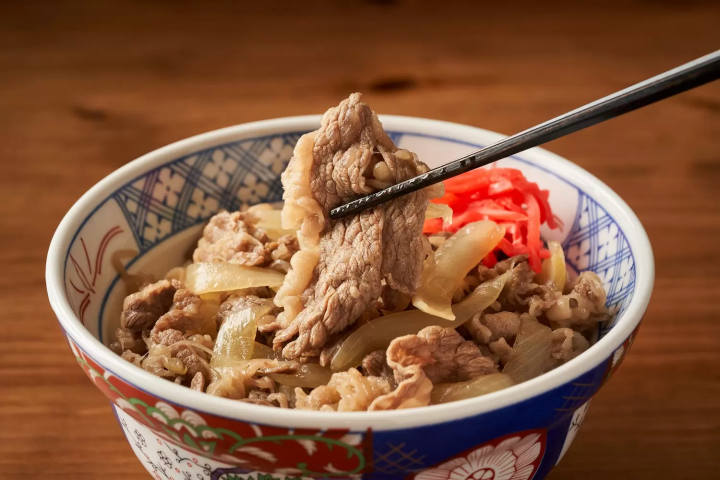
Photo by Pixta
Donburi, commonly known as "don," is a quintessential Japanese dish consisting of a bowl of rice topped with various ingredients. It is loved for its convenience, heartiness, and the wide variety of toppings available.
Donburi primarily consists of two components: rice and toppings. The toppings can include meat, fish, vegetables, and more, seasoned with sauces or condiments that bring out individual household or regional characteristics. Additional items such as shredded seaweed, pickled ginger, or green onions enhance the flavor and texture of the donburi dish.
Lately, you can even find gyoza donburi (rice topped with gyoza potstickers), yakitori donburi (rice topped with skewered grilled chicken), or chicken teriyaki donburi (rice topped with teriyaki-style chicken).
Basically, if you have a bowl of rice with any kind of topping, that is a donburi-style dish.
Donburi Guide: Types and Restaurants
History and Origins of Donburi
1. Katsu-don: Pork Cutlet Doburi
2. Ten-don: Tempura Donburi
3. Gyū-don: Beef Donburi
4. Una-don: Unagi Doburi (Eel Donburi)
5. Oyako-don: Chicken and Egg Donburi
6. Kaisen-don: Seafood Donburi
History and Origins of Donburi
The origin of donburi dates back to the Edo period (1603-1868). The first recognized donburi dish was ten-don (tempura donburi), developed as a quick and convenient meal for commoners in Edo (modern-day Tokyo). Tempura was placed on hot rice and drizzled with a special sauce, quickly gaining popularity.
In the Meiji era (1868-1912), gyu-don (beef bowl) emerged. Influenced by Western culture, meat consumption became more common, leading to the creation of beef dishes. Yoshinoya, the originator, became known for its quick, nutritious gyu-don, which gained widespread popularity.
After World War II, Japan's economic growth led to a diversification of food culture, resulting in the creation of various donburi dishes. Donburi became a staple of Japanese home cooking due to its ease of preparation.
Now let's take a look at the six most popular types of donburi dishes.
1. Katsu-don: Pork Cutlet Doburi
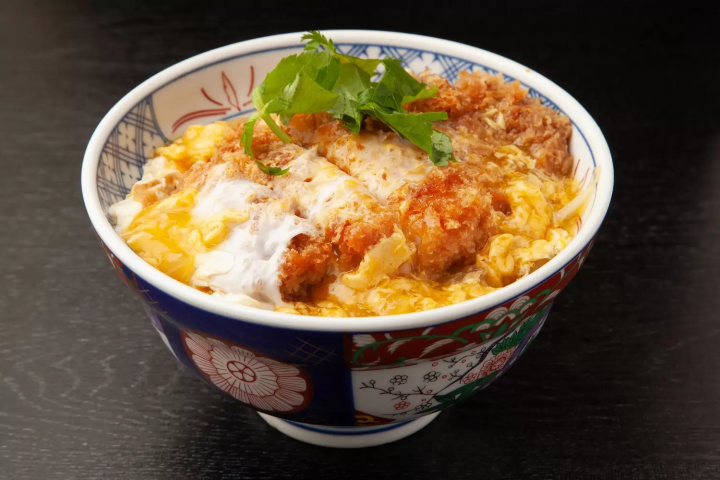
Photo by Pixta
Katsu-don is a fried pork cutlet (*1) that has been lightly fried in a mixture of soy sauce and scrambled egg, then placed on rice. It combines Japanese flavors, fried foods, and meat, making it very popular with many different groups of people.
The average price of katsu-don runs around 1,000 yen, and is a guaranteed part of most soba and set meal restaurants.
Recently, the katsu-don specialist chain shop Katsuya has been selling one variety of this dish for 560 yen.
*1 Tonkatsu: fried pork cutlets that have been battered in a mix of flour, egg, and bread crumbs.
Katsu-don/Tonkatsu Restaurants:
Ginza Bairin Main Shop in Ginza, Tokyo: Google Map
Wako (all over Japan): https://wako-group.co.jp/
Maisen (all over Japan): http://mai-sen.com
Read also
2. Ten-don: Tempura Donburi
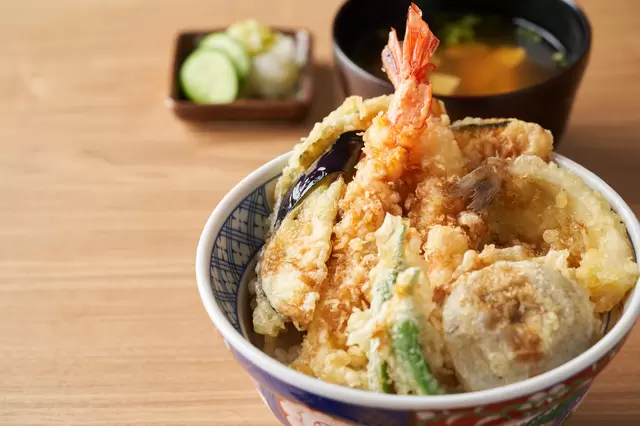
Ten-don has tempura resting on rice with a mild sauce poured over it.
As there are many different forms of tempura, from shrimp to seasonal vegetables, this dish in particular has a lot of variety to offer in taste.
The price of ten-don also varies greatly. Shrimp or anago (grilled eel) tempura can be quite pricey, while kakiage-don (*2) is comparatively cheap.
Ten-don is commonly found at tempura or soba restaurants and ranges in price from 500 yen to about 1,500 yen.
*2 Kakiage: Kakiage is a kind of tempura made by deep-frying a mixture of vegetables, seafood, or sometimes both, which are finely chopped and combined with a light tempura batter.
Ten-don and Tempura Restaurants:
Tenya (all over Japan): https://www.tenya.co.jp/english/
Kaneko Hannosuke Nihonbashi (Tokyo): Google Map
Aoi Marushin (Tokyo): Google Map
3. Gyu-don: Beef Donburi
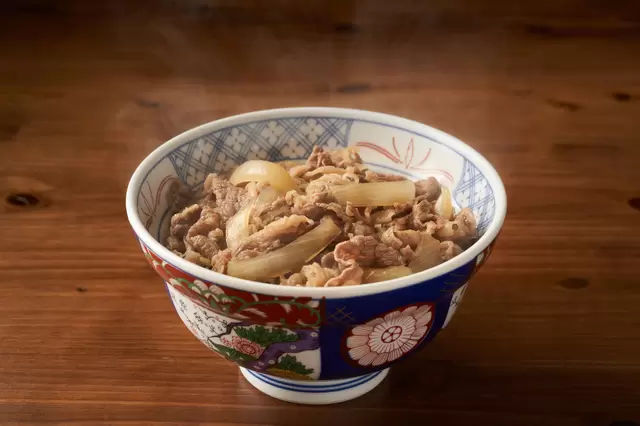
Gyu-don is made from thinly sliced beef and onions that have been saturated in a salty-sweet soy sauce-based sauce and then laid over the rice.
Yoshinoya and Sukiya, two popular gyu-don chain restaurants can be found at almost every station so you can easily enjoy gyu-don anywhere.
Your meal will arrive mere minutes after ordering it at one of these shops, and most bowls of gyu-don start from 400 yen, making it perfect for business lunches or a late dinner.
Gyu-don Restaurants:
Yoshinoya (All over Japan): http://yoshinoya.com
Matsuya (All over Japan): https://www.matsuyafoods.co.jp/english/
Sukiya (All over Japan): https://www.sukiya.jp/en/
4. Una-don: Unagi Donburi (Eel Donburi)
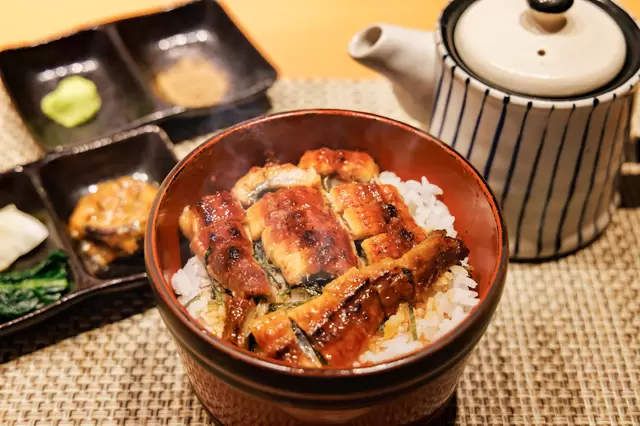
Una-don or unagi donburi is a slightly sweet, savory rice bowl that has kabayaki-style fried Japanese eel (*3) on top of the rice.
As unagi (Japanese eel) is rather expensive to begin with, this donburi tends to cost over 1,000 yen (with fancier options costing more) and is typically only available at traditional Japanese restaurants or unagi specialty shops.
*3 Kabayaki: In the kabayaki style, the fish is split down the back (or belly, depending on the region), gutted, boned, butterflied, and then cut into square fillets. These fillets are skewered, grilled, and basted with a sweet soy-based sauce known as tare.
Una-don and Unagi Cuisine Restaurants
Unatoto (All over Japan): https://www.unatoto.com/
Unagi Naruse (All over Japan): https://www.unagi-naruse.com/
Unagi Hashimoto (Tokyo): Google Map
5. Oyako-don: Chicken and Egg Donburi
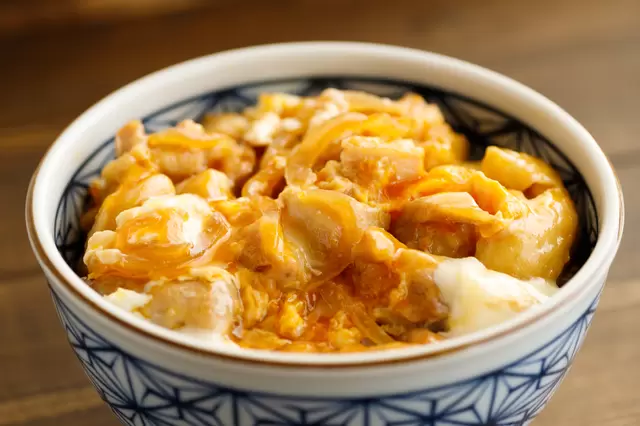
In oyako-don, the chicken is first cut into bite-sized pieces and then stewed in an egg soy sauce base, then put on top of the rice.
The dish itself is called oyako-don because it refers to “oya” ("parents") - in this case chicken - and “ko” ("child/children") - the eggs.
It’s quite popular thanks to the combination of delicious chicken and the thick richness of the eggs. You can easily find this dish at set-meal restaurants or soba shops.
Oyako-don Restaurants
Nakau (All over Japan): https://www.nakau.co.jp/en/
Tamahide (Tokyo): Google Map
Hachikian (Tokyo, Kyoto, Osaka, and more): https://www.hachikian.com/
6. Kaisen-don: Seafood Donburi
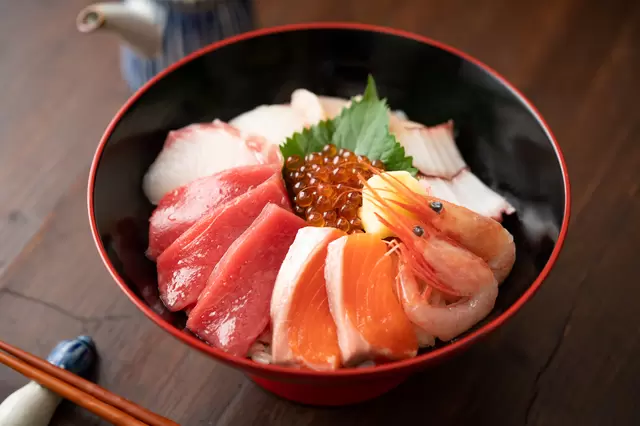
Kaisen-don is a bowl of rice topped with fresh seafood. It varies by region, with specialties like ikura (salmon roe) in Hokkaido and saba (mackerel) in Kyushu.
Rather than pouring sauce over this dish, many prefer to eat the fish slices separately with soy sauce.
Kaisen-don can be found at Japanese restaurants, sushi shops, and at large seafood markets like Tsukiji Market in Tokyo, Kuromon Market in Osaka, and Nishiki Market in Kyoto.
The pricing for this dish is somewhat different than the others as, depending on the ingredients and their quality, the price can run from very reasonable to quite expensive.
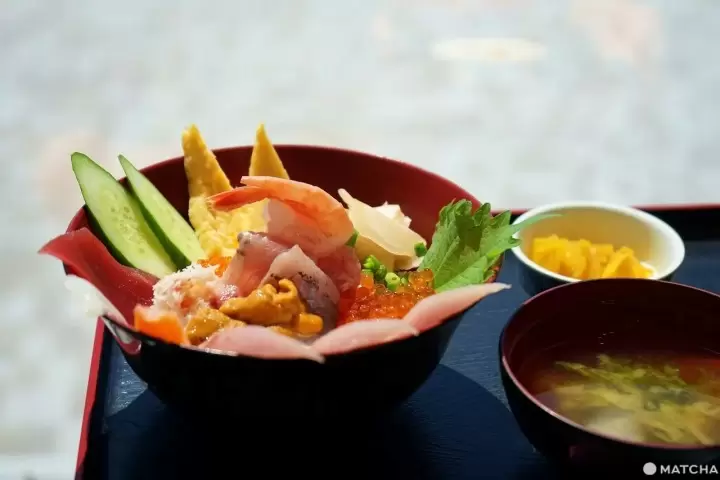
Seafood donburi. Picture from Exciting Ocean Discoveries in Iwaki: Seafood, an Aquarium, and Great Views
If you visit cities along the Pacific Coast of Japan, such as Sendai, Iwaki, or Kesennuma, stop by the local fish markets to taste exquisite kaisen-don made with freshly caught seafood. The richness of their taste will leave a deep impression!
Kaisen-don Restaurants
Tsukiji Area (Tokyo): https://www.tsukiji.or.jp/english/shoplist/cat-d/cat-13/
Maguro Ichiba (Osaka): https://www.giraud.co.jp/maguro-ichiba-d/
Naniwa Robata (Osaka): https://www.lucua.jp/en/shopguide/id995_e.html
The Role and Future of Donburi Today
In contemporary society, donburi is popular as a quick and balanced meal. It is loved for its convenience, fitting well into the busy lifestyles of modern people.
Donburi is a symbol of Japanese food culture, celebrated for its diversity and convenience. Understanding its historical background and the stories behind each type of donburi can deepen your interest in this beloved dish!
Read also
All pictures from PIXTA
This is the official account of MATCHA's editorial department. Our articles feature useful travel information for visitors to Japan, from how-to guides to recommended places to visit.








![[90 minutes by car from Tokyo!] Enjoy the gourmet food of the Minami Boso area of Chiba at Boso Station Tomiura!](https://resources.matcha-jp.com/resize/200x2000/2025/01/17-219692.webp)
































![[Yamanashi/ Hokuto City] 4 Hot New Spots Opening in 2026](https://resources.matcha-jp.com/resize/720x2000/2025/12/12-252747.webp)

![[Reopening in March 2026] Ikoma Sanjo Amusement Park Park, 45 minutes from Osaka , with free admission](https://resources.matcha-jp.com/resize/720x2000/2024/08/28-194409.webp)
![[Gunma] 5 recommended gourmet foods at Kawaba Denen Plaza Roadside Station!](https://resources.matcha-jp.com/resize/720x2000/2025/02/26-225970.webp)
![[Kanazawa] Enjoy the world of gold leaf to the fullest in the city with the highest production volume in Japan](https://resources.matcha-jp.com/resize/720x2000/2025/11/12-249564.webp)